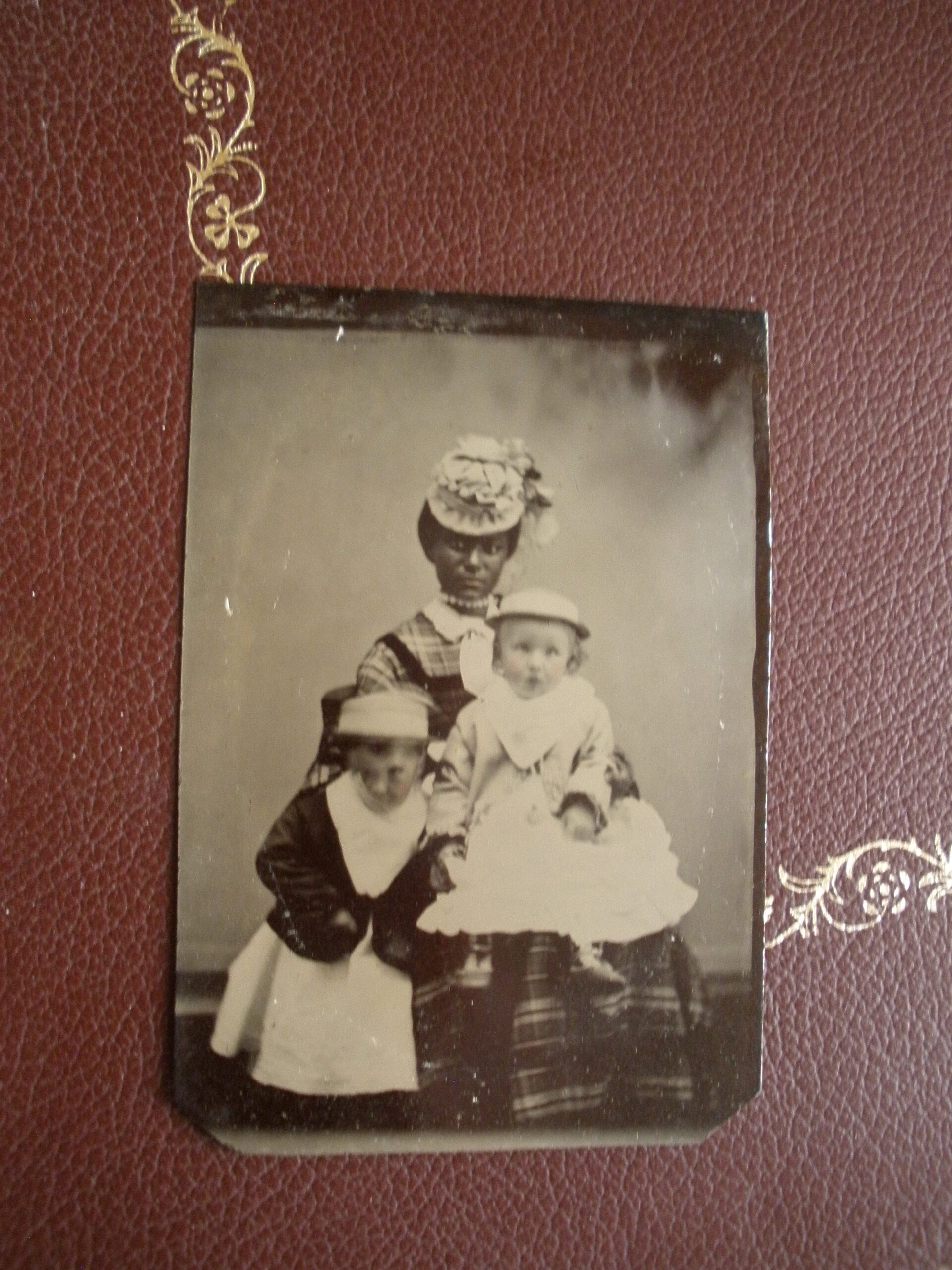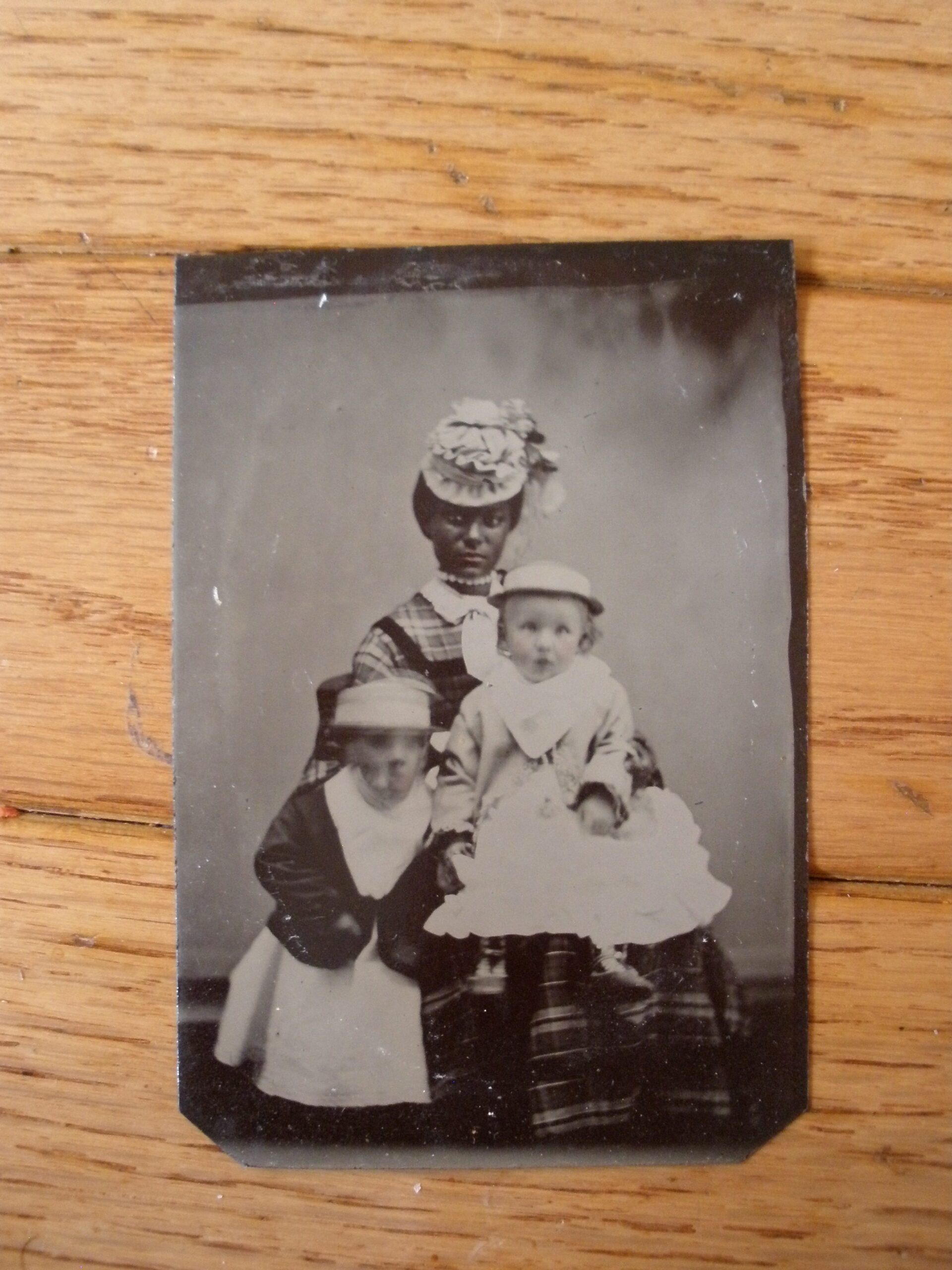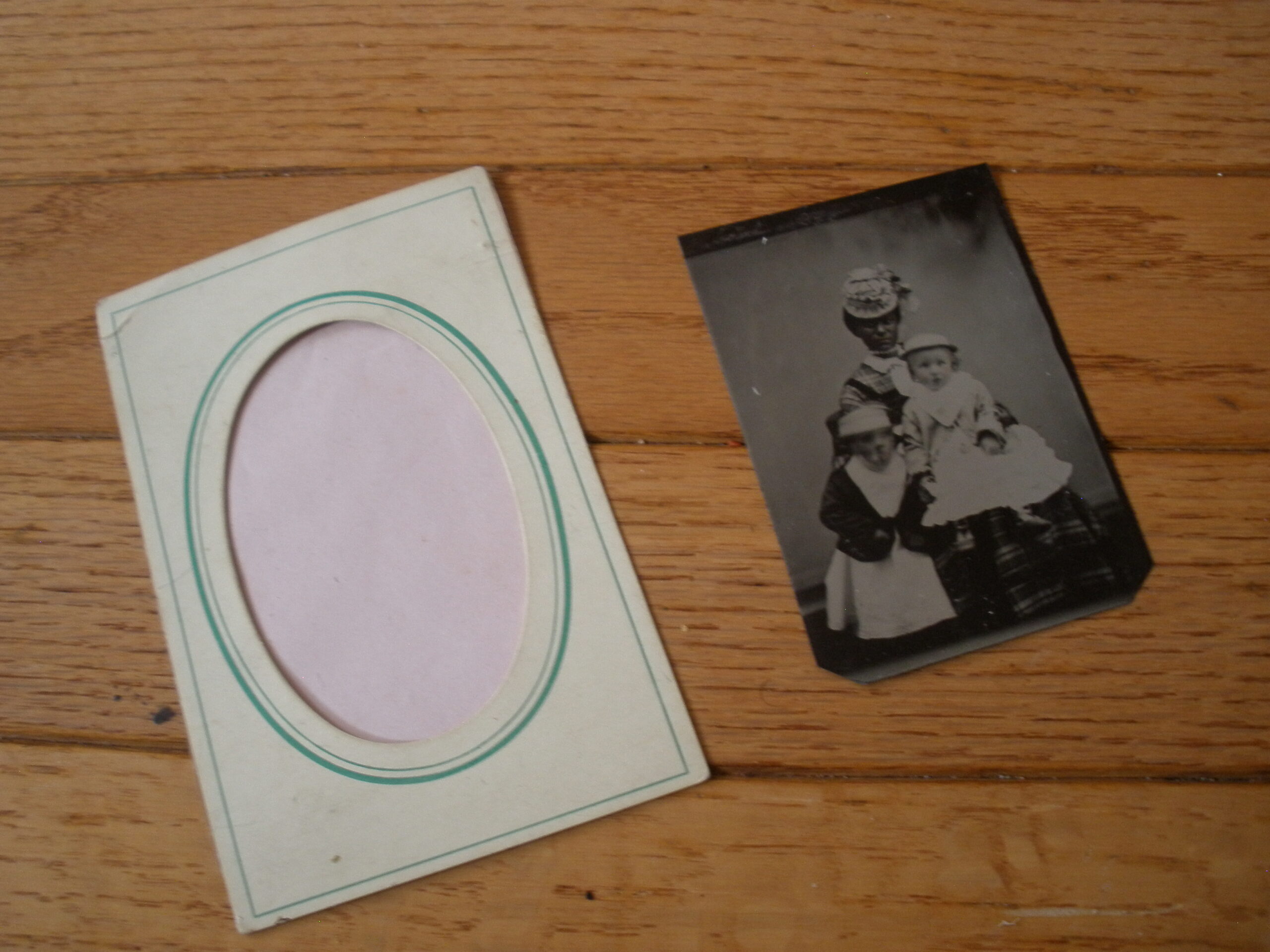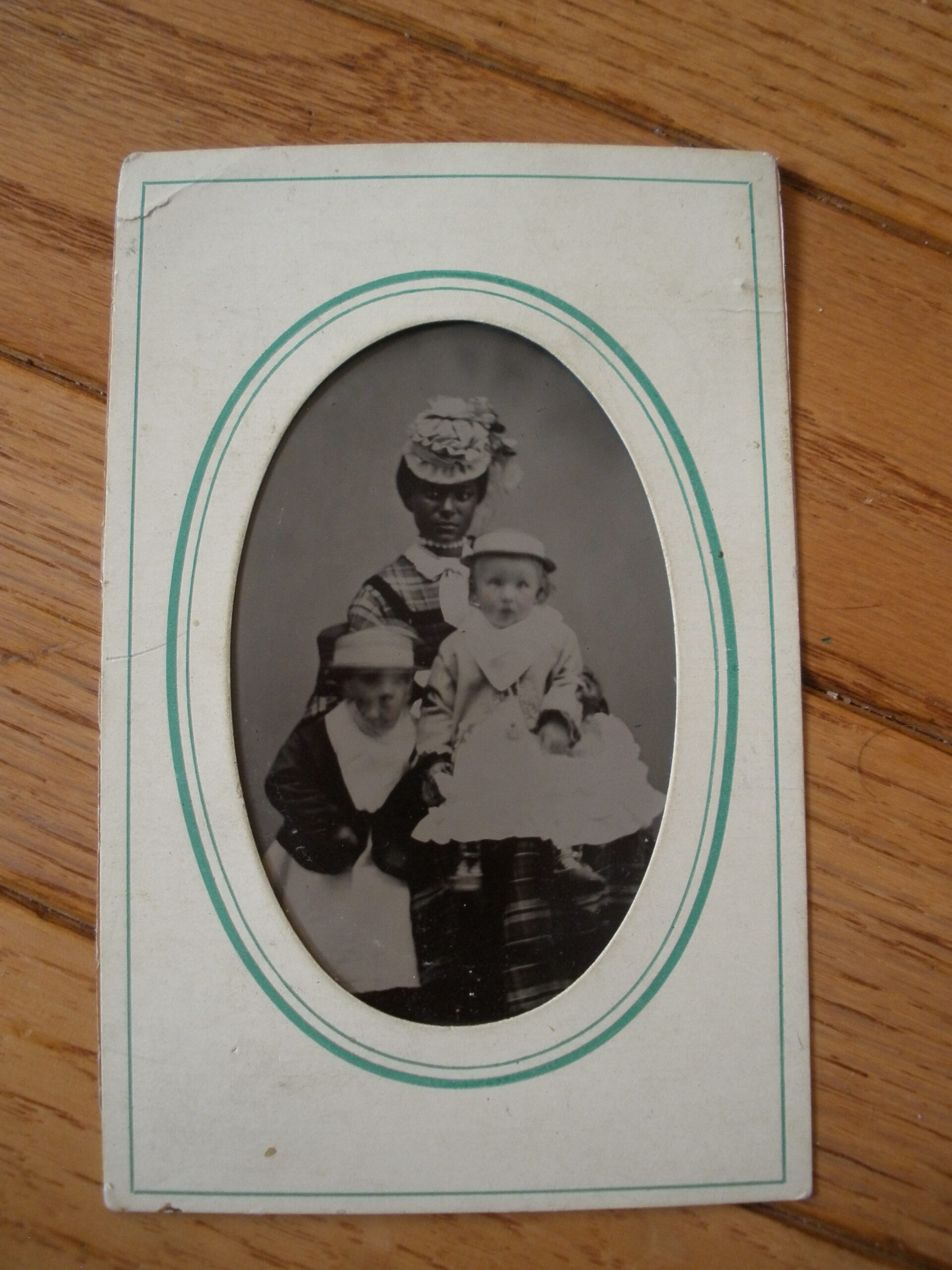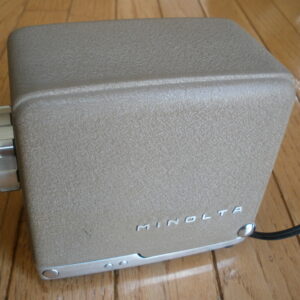For sale is an original late 1800s TIN TYPE PHOTOGRAPH of Lovely African American Woman & Caucasian Toddlers. This unusual civil war era portrait with mixed race subjects is in excellent condition. The attractive woman is well dressed and wearing a floral hat and a pearl necklace. The boy and girl toddlers are also well dressed. The boy’s face is slightly blurred due to the child not holding still for the photographer. Unknown whether the woman is the children’s caretaker or birth mother. Rare tintypes exist that document interracial couples, providing a glimpse into relationships that were often marginalized or illegal in parts of the United States at the time. The tin type for sale is a sixth plate size and measures about 2 3/4 by 3 1/2 inches. A rare tin type collectible.
Tin type photos vary in size as follows:
– Gem size measures about ½ x 1 inches
– Sixth plate measures about 2 ¾ by 3 ¼ inches
– Quarter plate measures about 3 ¼ by 4 ¼ inches
– Full plate size measures about 8 ½ by 6 ½ inches
A tintype is a photograph made by creating a direct positive on a thin sheet of metal coated with a dark lacquer or enamel and used as the support for the photographic emulsion. Tintypes enjoyed their widest use during the 1860s and 1870s, but lesser use of the medium persisted into the early 20th century. Tintype portraits were at first usually made in a formal photographic studio, like daguerreotypes and other early types of photographs. Later, tin types were most commonly made by photographers working in booths at fairs and carnivals, as well as by itinerant sidewalk photographers because a tintype could be developed and fixed and handed to the customer only a few minutes after the picture had been taken.
The tin type saw the Civil War come and go, documenting the individual soldier and horrific battle scenes. It captured scenes from the Wild West, as it was easy to produce by itinerant photographers working out of covered wagons. It began losing artistic and commercial ground to higher quality albumen prints on paper in the mid-1860s.

